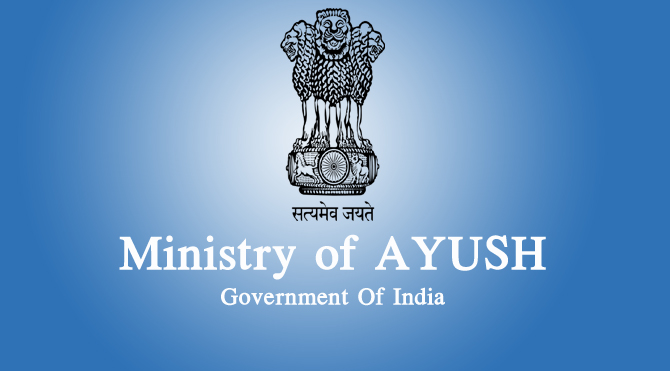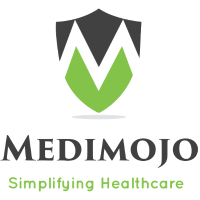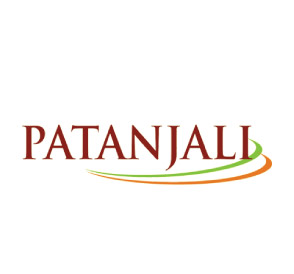
 With most promising breakthroughs happening in the medical printing front, the diagnostic imaging, 3D printing offers endless possibilities Elets News Network (ENN) explores the expanded range of diagnostic imaging and the technological advancement of printing in healthcare domain
With most promising breakthroughs happening in the medical printing front, the diagnostic imaging, 3D printing offers endless possibilities Elets News Network (ENN) explores the expanded range of diagnostic imaging and the technological advancement of printing in healthcare domain
Digitisation helps to administer tedious work of managing multiple printing devices for different medical images and administration of various output sheets such as films and papers. It acts as boon for Indian diagnostic industry, as it might help to lower the high print cost of the medical imaging, as it stands as a challenge.
From the time Wilhelm Roentgens discovered X-rays in 1895 medical imaging has gone through continuous innovations “ computed tomography (CT), magnetic reasonance imaging (MRI), nuclear imaging and ultrasound playing a transformative role in enhancing healthcare. In 1970s, with the advent of computer based image processing the medical imaging experienced the digital revolution, but it was not until 1993 with the introduction of Digital Imaging and Communications in Medicine (DICOM) 3.0 that the transition to a unified imaging platform for picture archiving and communication system (PACS). DICOM enables the integration of scanners, servers, workstations, printers and network hardware for multiple manufacturers into PACS.

V Balakrishnan, utive General Manager – Marketing & New Business Development at Konica Minolta Business Solutions India Pvt Ltd
Even though file rooms are shrinking and darkrooms no longer exist, prints are essential when there is a need in reviewing images for diagnosis, by general practitioners and surgeons to specialists such as neurologists and orthopedists to discuss the condition with patient. To improve productivity and lower the cost, the medical industry has transitioned to digital imaging and achieving over the past two decades. Presently, the printing needs are more diversed than ever before with an expanded range of diagnostic imaging modalities, cameras in the operating room and the digitisation of information in the pathology laboratories to ophthalmology departments. With the expansion of digital imaging there is a need to identify medical printing solutions that meet a facilitys comprehensive needs efficiently and cost-effectively.

As medical facilities seek to update their printing with latest technologies it is important to identify specific printing needs and review printing options. There are various technological trends driving the growth of the digital printing market such as WiFi, networking with organisations going for greener environment with lower power consumption and bio degradable material used in printers are becoming essential, increase in the trend of electronic transactional communication for instance pathology lab reports, increase in need for electronic content, etc, also printing more visual content with the rise in multimedia communications and multimedia devices.
Private Players Drive the Changethat takes to our 70 per cent global turnover. We have a medical health division that is credited with one product which called the AeroDR. This product allows one to take digitised images. When going for an X-ray the first thing that crawls the mind is the amount of exposure to radiation the body gets because the process itself is such, they not able to pin point the particular area and throw more exposure than what is required. In AeroDR we have a process where the results can be seen in less than 30 seconds and you see the digital image and you have a radiation exposure less than 50 per cent than a normal procedure. Minoltas technologies and imaging is what we leverage. We are able to pinpoint the area we are able to give far lesser radiation exposure and we can see the digital image in less than 30 seconds. What are the challenges faced by the healthcare sector in India presently? See, the challenge is more of an opportunity for us. The government has its own challenges in providing better healthcare delivery. The private sector that has stepped up into the sector is driving the change. That is constant to both. I think it can get faster if we focus more on creating the digital infrastructure that is required to carry data. Today, we are not able to think of implementing certain solutions in India because we not have stable data transfer network. We should be far much open to leverage technology. If someone is getting operated in the district hospital you can have a panel of experts sitting miles away looking into the operation helping the doctor. Are you focusing on the government sectors? It is very limited, because of the way we are structured in terms of our sales channels which is predominantly partners. We have few of our partners focusing on government. Most of them are generic barring the ones who address government because most of them operate from particular territory or geography so they need more able to leverage more opportunities in this domain. How about the positing of colour printing as it is considered pricey by Indian market? Indian market is different from others. Even though colour printing devices are less than 80 per cent in A3 and less than four per cent in A4. Colour is about how do we sell and that is one area where we have a very large market share. Konika Minolta is known for colour. |
3D Printers “ The Next Big Thing3D printing is a thriving market with full of innovation and experimentation. With the advancement in the technologies after digital printing, now 3D- printing is revolutionising the healthcare world. 3D-printing also popularly known as addictive manufacturing, it has moved beyond being a primary technology. It is a process of converting digital designs into solid three-dimensional objects. 3D printing has the potential to impact millions through variety of medical solutions particularly surgery and the treatment of otherwise intractable health conditions. 3D- printing is used to produce customised robotic exoskeletons that enable the paralysed to stand and walk providing high quality, customised implants, human tissue and select organs. The increase in tapping 3D printing by healthcare industry is projected to grow at a CAGR of 25 per cent globally from 2015 to 2020 and it is expected to reach US$ 2.13 billion by 2020 as stated in MarketsandMarkets report. The global 3D printing medical device market is segmented into 3D printing equipment, materials, and service & software. Further, 3D printing equipment market is categorised into 3D printers and 3D bioprinters. This innovative technology is hugely adopted by dental laboratories to increase scalability and precision in the manufacture of medical devices. It is revolutionary aspect for the medical industry as it saves time, saves more lives and improves the efficiency of the surgery as well. It provides great hopes for bioprinting like 3D printing human cells. The technology still is in its nascent stage but has achieved great strides in the past few years. Leveraging technology both in printers and printing materials have helped make the creation process more affordable, more accessible and much faster. The healthcare industry was an early adopter of 3D printing technologies with its potential to develop fully customized and personalised tools, devices, implants, models etc. There has been a swift implementation of 3D printing in healthcare industry. From the ability to create exact replicas of anatomy to work from before committing to complex operation to more subtle application like creating specific casts for immobilization after an injury the impact of 3D printing is substantial. There is also research being conducted on the possibility to replicate complex organs sustaining in human body with 3D printers. The technologies potential may in the manufacturing industry but it has variety of uses, immensely benefitting the healthcare industry. |
The increase in tapping 3D printing by healthcare industry is projected to grow at a CAGR of 25 per cent globally from 2015 to 2020 and it is expected to reach US$ 2.13 billion as stated in MarketsandMarkets
As many healthcare organisations are interested in transforming their present workflow, high investments act as a deterrent since existing medical imaging solution requires high upfront investment, skilled resources and an elaborate IT requirement. Ricoh keeps in mind the affordability and easy access of healthcare facilities for the patients and customer satisfaction. We are enthusiastic about our rapid growth and increased visibility in the country. Nowadays, c u s t o m – ers are l o o k i n g at partners that can develop a n d provide customised solutions. 360 degree framework has enabled Ricoh to emerge as onestop business solutions provider for increasing the workplace efficiency of enterprises through IT automation and process integration, said Manoj Kumar, Managing Director and CEO, Ricoh India told Elets News Network (ENN).
For the patient care medical grade printers that meet certain regulated safety and performance standards may be used such as compliance with Underwriters Laboratory (UL) regulations for special power supplies and groundings to protect against shock in case of contact with fluids. It must comply with the highest International Electro Technical Commission (IEC) standards.
Dr T B S Buxi Chairman, Department of CT scan and MRI, Sir Ganga Ram Hospital says, Medical imaging plays several roles like provision of media for primary diagnosis by radiologist, for sharing information with referring physicians and for archival of medical image for future reference. There are two popular printing technologies: Photothermographic laser imaging and direct thermal imaging.
He further added, In photothermographic laser imaging, laser light is absorbed by silver halide crystals forming clusters which form latent image centres. Silver behenate diffuses into these latent image centres and is reduced to metallic silver in the presence of developer leading to optical density on the film. In direct thermal imaging, thermal resistive head delivers controlled amount of heat to the film. Silver behenate is reduced to metallic silver leading to optical density on the film. Three major companies which include Carestream, Agfa and Fuji provide medical imagers which differ in resolution and image production rates.
For the patient care medical grade printers that meet certain regulated safety and performance standards may be used such as compliance with Underwriters Laboratory (UL) regulations for special power supplies and groundings to protect against shock in case of contact with fluids
 Moving with the market needs and trends the industry has made a paradigm shift to 3D from the 2D world. S Karthikeyan, National Manager CR and Imager Sales says, Medical imager is essential for all Hospitals and- Diagonostic centre having CR, DR , MRI or CT for printing of images. In the past decade there has been a steep demand in the number of modalities such as CR, MRI and CT which has resulted increase in demand of printer too. Medical Imager Sales in India has been growing in double digit at the rate of 10 per cent in the last few years since there was always a preference from doctors to view images on film which has helped maintain printer sales. Digitisation of the X-ray process from Conventional (Analog ) to Digital (CR/ DR) too has contributed to growth of Imager Sales.
Moving with the market needs and trends the industry has made a paradigm shift to 3D from the 2D world. S Karthikeyan, National Manager CR and Imager Sales says, Medical imager is essential for all Hospitals and- Diagonostic centre having CR, DR , MRI or CT for printing of images. In the past decade there has been a steep demand in the number of modalities such as CR, MRI and CT which has resulted increase in demand of printer too. Medical Imager Sales in India has been growing in double digit at the rate of 10 per cent in the last few years since there was always a preference from doctors to view images on film which has helped maintain printer sales. Digitisation of the X-ray process from Conventional (Analog ) to Digital (CR/ DR) too has contributed to growth of Imager Sales.
Be a part of Elets Collaborative Initiatives. Join Us for Upcoming Events and explore business opportunities. Like us on Facebook , connect with us on LinkedIn and follow us on Twitter , Instagram.













